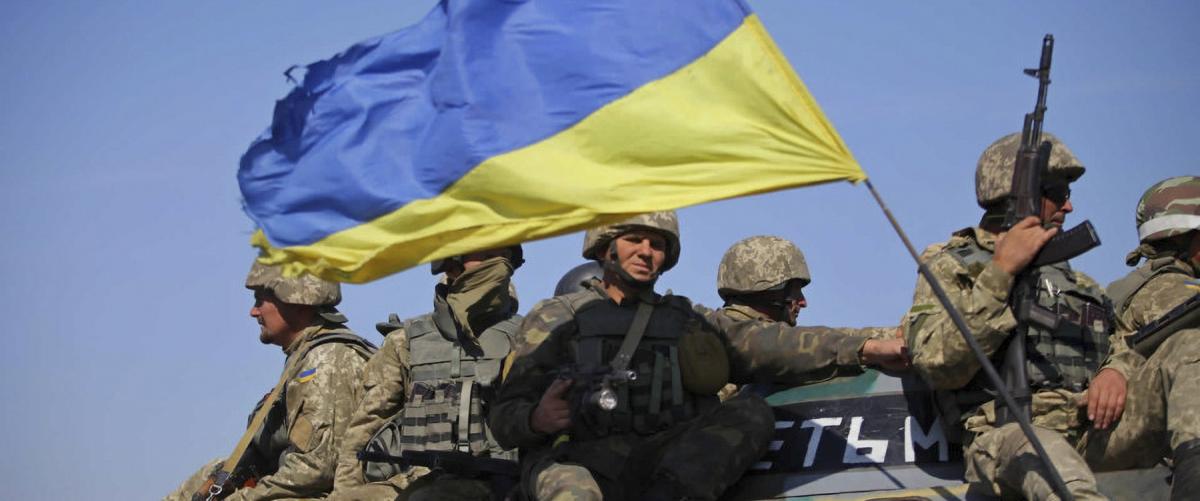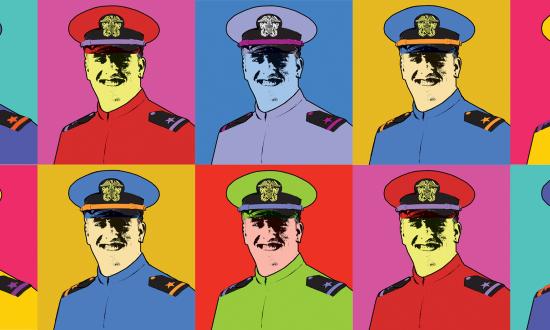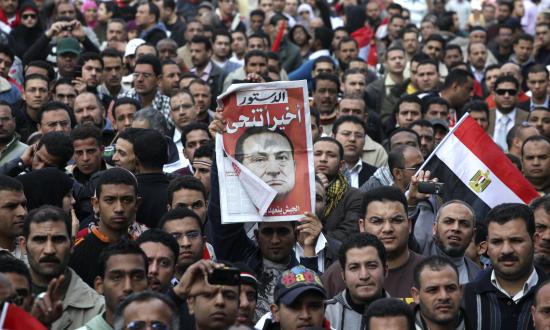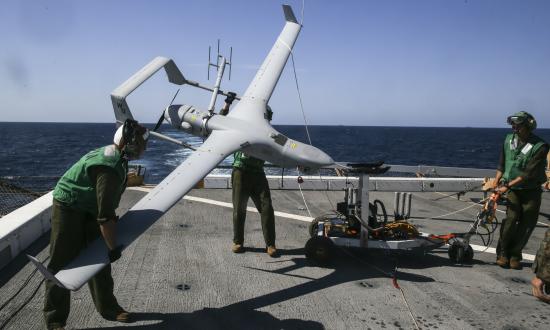Russia's war in Ukraine revealed substantial combat weaknesses across all domains, unified NATO to a level not seen since the immediate aftermath of 9/11, if not the collapse of the Soviet Union, and exposed poor leadership practices that failed to identify problems up and down the chain of command. Russian leaders did not anticipate one resounding issue: the comprehensive, spectacular failure of their intelligence services. Most significantly, Russian President Vladimir Putin failed completely to understand the resolve of the Ukrainian people, believing he could win a quick war by cutting off the political leadership while the Ukrainian people welcomed him with open arms. The results were the same whether Putin was given bad intelligence or acted on bad assumptions never challenged by his intelligence services. The question remains if Russia can adapt to these intelligence failures and change the trajectory of the war.
The lessons learned in this conflict will directly affect how the U.S. military understands its Russian competitor, which will drive planning assumptions and force employment. For U.S. naval intelligence, identifying the lessons is an easy first step, but applying them and creating a cultural shift to adapt to future conflicts requires deliberate action and intention. Below are three lessons from the conflict and ways the naval intelligence community can make changes to avoid the same fate as Russia.
Improve and Prioritize Cultural Understanding
Russia mostly ignored the existence of a distinct Ukrainian cultural identity and was thus surprised the Ukrainians continued to fight despite Russia's overwhelming conventional force advantage. To avoid this outcome in the next war, naval intelligence should begin by revisiting its most prominent heroes: then- Lieutenant Commander Edwin Layton and the reasons for his success. At the time of this writing, the 80th-anniversary celebrations of the Battle of Midway had just concluded. In any such gathering, naval intelligence personnel can be found extolling Layton's famous assessment of the Japanese fleet's advance toward Midway. The communications intelligence work of then-Commander Joseph Rochefort and the Station Hypo team receives top billing for cryptologic warfare personnel, including the renowned water supply ruse that exposed Midway as the target designated as AF. Most discussions of operational intelligence (OpIntel) begin and end with this case study.
Rarely mentioned in these OpIntel discussions is the extensive Japanese cultural expertise wielded by both Rochefort and Layton, which they mainly acquired during their prewar multi-year Japanese cultural immersion assignments. Both men spoke fluent Japanese, and Layton socialized with Admiral Yamamoto himself multiple times.1 In his memoirs, Layton recounted multiple prewar intelligence successes directly enabled by his Japanese language abilities, including revealing Japan's treaty-violating fortification of Pacific islands, and catching a U.S. Navy radioman in the act of espionage for Japan.2 Without this level of understanding, Admiral Chester Nimitz would never have given him the job “to be the admiral commanding the Japanese forces and tell me what is going on.”3 Given the extensive lead time required to build this expertise, naval intelligence should begin adjusting personnel management processes now.
A review of the public biography sheets of the 18 active-duty information warfare flag officers listed in the Navy register yields only three who have foreign language ability, attaché duty, or other indicators of cultural expertise. Further, discussions surrounding promotion boards at the O-4 to O-6 level continue to reflect the Navy's preference for generalization and an all-encompassing focus on operational tours, usually at sea, and leadership tours ashore as executive and commanding officers. The inherent demands of these assignments preclude the in-depth cultural study necessary to develop a deep understanding of the adversary. While some progress shows promise with a recent focus on IndoPaCom expertise, the guidance remains too generic to proactively produce Layton-level cultural knowledge. Given that reach-back communication capacity in the next war is expected to go from low to an absolute minimum, naval intelligence leaders afloat will have to rely on themselves and their teams to mitigate the loss of access to cultural expertise from civilian analysts ashore.
Naval intelligence can develop a cadre of experts via proactive adjustments to existing personnel management processes. Incrementally strengthening the wording of O-4 to O-6 and E-7 to E-9 promotion board precept letters and convening orders to emphasize deep knowledge of Russia, China, or Iran could yield the desired result. Adding this focus to promotion boards will prompt ambitious naval intelligence professionals to seek assignments in which they expect to face the same adversary. Including Russian or Chinese language ability in the list of "best qualified" attributes also is essential. Naval intelligence can continue to meet the Navy-wide preference for well-rounded personnel by requiring diversity in organizational assignments marked by warfare area, echelon of command, et cetera. Geographic diversity can be maintained via rotations between the waterfronts, Beltway-area billets, and overseas duty. Leaders of large intelligence centers, such as ONI and DIA, must support this process and manage internal tasking assignments accordingly. To develop Layton- and Rochefort-level experts, naval intelligence must prioritize development of extensive knowledge of one adversary over shallow knowledge of them all.
Put PowerPoint in its Place
Russian planners also failed to anticipate how Ukrainian forces would employ a mix of high and low technology to stall the Russian advance. Employing a combination of the newly developed Neptune antiship cruise missile and possibly World War II–vintage naval mines, Ukraine precluded any amphibious assaults, which reduced the Russian Black Sea Fleet's campaign contribution to nothing beyond long-range missile strikes. Ukraine landed an information-domain body blow by sinking the flagship, the Slava CG Moskva. Ukraine thus far has overperformed all Western intelligence estimates, calling into question conventional processes for analyzing combat capability.
In War on the Rocks, Christopher Dougherty highlighted a need to improve threat modeling beyond using a system's maximum effective range as the radius of a circle to be plotted on a map, which is then declared a no-go zone. He also advocated for a more holistic approach to combat capability assessments, working across warfare areas to better characterize adversary performance in the real world. Finally, Dougherty also recommended stating and frequently revisiting limits of understanding. Naval intelligence suffers from these shortcomings, aggravated by the disproportionate focus on PowerPoint. Analysts spend unnecessary time agonizing over formatting minutiae like colors, font sizes, and slide counts. Revisiting anything in PowerPoint requires a pain-staking process of manually reviewing historical files.
Naval intelligence can address many of these shortcomings by shifting to a Geospatial Information System (GIS) solution for data analysis and presentation, building on the promising start from the NGA shiprider program. Under this program, NGA geospatial analysts embarked with deployed carrier strike groups, leveraging naval intelligence programs of record to import data into ArcGIS for in-depth analysis of multiple adversaries and environmental data sets. Tailored datasets are disseminated in GeoPDF file format via TerraGo publishing software. These GeoPDFs can be tailored for file size to minimize bandwidth concerns and for content to satisfy requirements for analysts, watchstanders, and briefers. This approach significantly improves situational awareness and understanding of the operational environment across all participants.
Instead of an interesting aside, naval intelligence needs to make this the standard way of doing business. Applied to the Black Sea, a GeoInt analyst can combine positions of ships, land-based missile launchers, and airbases with environmental modeling of electromagnetic propagation, cloud cover, and sea currents to more accurately model nodes across the kill web. Snapshots in time can be disseminated widely via compressed GeoPDFs. If a commander requires a PowerPoint brief, then any slide with a map should be a screenshot from the GIS foundation. Analysts and planners can then focus on leveraging the environment to achieve a decisive advantage vice fighting to force-fit cartoon shapes and text boxes on top of flat map graphics. If it is impossible to overcome ArcGIS licensing costs and system limitations, multiple open-source alternatives should be explored with the help of naval intelligence’s information warfare brothers and sisters in the information professional community.
Naval intelligence also must embrace the open-source intelligence (OSInt) phenomenon rather than competing with it out of fear that it will put its practitioners out of a job. Naval intelligence will have to contend with open-source intelligence because of its extensive inclusion in press reporting, and commanders will continue to require their intelligence officers to comment on what they see in the media. With an accompanying improvement in cultural knowledge, OSInt analysts will mitigate OSInt's weaknesses through better understanding of the sources' underlying biases and the subsequent omissions and/or exaggerations and how to mitigate them. The strikes against the Moskva and Alligator LST Saratov received extensive media coverage, demonstrating the relevance of OSInt to the maritime domain. In addition, Bastion cruise missile launch vehicles transiting between their garrison and deployment sites in Crimea were among the many vehicle movements posted to social media in the weeks before the Russian Ministry of Defense announced their employment for land strikes.
Improve Proficiency in Coalition Operations
The open-source revolution aided and amplified the comprehensive strategic-level sharing of intelligence with NATO allies, providing a shared understanding of the situation and driving NATO's robust response to the incursion. The extensive international support provided to Ukraine has bolstered force morale and enabled its forces to continue outperforming nearly everyone's prewar expectations. Though it was sufficient for enacting sanctions and sending weapons, this intelligence sharing would have come too late for effective NATO-wide planning for direct combat against Russia. Russia's struggles to coordinate combined arms operations across its services, mostly on land, demonstrate the likely outcome when leaders underestimate the difficulty inherent to planning across units with disparate functions and garrison-environment leadership. Executing combined maritime air, surface, and undersea operations in a coalition environment will present NATO with an even more significant challenge. To have any hope of successfully working together, our coalitions must have a detailed and accurate shared intelligence picture. Naval intelligence must seize this opportunity to build the working-level ties necessary to sustain this intelligence picture and leverage our partners' expertise before the shooting starts.
Building these ties has been hindered by an overly complex, bureaucratic foreign disclosure process and tenuous connectivity between the United States and partner enterprise IP networks. Although foreign disclosure requirements touch all areas of naval operations, the tasking to lead the process usually falls to an intelligence officer. Afloat intelligence teams need more support from higher headquarters to reduce this burden on their ability to nurture tactical-level partnerships across the coalition. Naval intelligence as an enterprise must develop a unified approach to coalition information exchange that spans the strategic to tactical levels of war. The current political environment presents an opportunity for this effort to receive backing from the Director of National Intelligence and other Cabinet-level and senior congressional leaders, which will be indispensable to overcoming the inertia present in the three-letter national intelligence agencies.
Nearly all naval intelligence teams rely on these agencies for all manner of intelligence products published under their Original Classification Authority (OCA), very little of which is written for release to a broad set of partners like NATO. Getting OCA approval to share more broadly requires remotely navigating a bureaucratic process designed not to facilitate efficient sharing of intelligence but to minimize risk to the OCA from any information compromise. If this approval is achieved, then the authors must receive approval from the local foreign disclosure officer, whose function is to manage risk on the Navy by second-checking homework on compliance with dissemination controls. Naval intelligence community leaders should engage the OCAs in a series of working groups to revisit policies designed to mitigate this risk and address other impediments to coalition-wide information sharing. The first step should be defining persistent coalitions of partners with whom we expect to fight against each major adversary. NATO already constitutes a Russia-focused coalition, but the challenge will be more difficult against China because of regional political sensitivities.
Once defined, each coalition should have its own working group to address the specific limitations pertaining to its members. It should begin with an honest discussion of the risk of compromise by a foreign partner, whether from traditional espionage or sanctioned exchanges with an adversary. Regarding espionage, allied personnel should receive the same presumption of innocence given to U.S. personnel. Further, active coalition participants are unlikely to receive national tasking for information exchange with adversaries. National intelligence managers can further mitigate the risk via intermediate dissemination controls prohibiting the distribution of certain products beyond participants. Having established a risk agreement, the working groups should examine ways to improve efficiency. Prioritizing original production approved for coalition-wide release is one possibility. Or the group could develop detailed editing guidance, perhaps on topic areas or accuracy of measurements, for U.S. participants to use as sourcing when producing for the coalition.
Thus, equipped to share broadly, naval intelligence teams at the numbered fleet level and below must remedy the insufficient IT architecture connectivity inhibiting close working-level ties with counterparts. Too often, U.S. partner expertise on the adversary is neglected because the products are unavailable on SIPRNet, or there are minimal available workstations on the Battlefield Information Collection and Exploitation System (BICES) and other networks that U.S. partners can access directly. Naval intelligence must work closely with information professionals to reliably connect the enterprise networks. Soon-to-be NATO partners Sweden and Finland have provided an example in interoperability that naval intelligence should aspire to follow. If the United States cannot talk to its partners now, it will never achieve the proficient interoperability necessary to fight together.
Naval intelligence is unlikely to fail as Russia has in Ukraine. Still, the United States cannot allow itself to believe it is immune to similar failures. Some actions to remedy these weaknesses have already begun, but much more is needed to capitalize on the opportunity to use the Ukraine crisis as a catalyst for change. Naval intelligence needs to incentivize development of specialized cultural expertise on U.S. adversaries via specific language in the pathways to promotion. The Navy must move beyond PowerPoint as the foundation of intelligence dissemination and leverage the tools already used elsewhere in government and the OSInt world. Finally, the United States must stop talking about how it will never fight another war alone and become proficient in coordinating with its critical allies and partners. The change must begin now to have any hope of emulating the success of Edwin Layton and Joseph Rochefort and ensuring victory in the next war.
1 RADM Edwin Layton, USN, And I Was There (New York City: Morrow and Company, Inc, 1985), 136–37, 140–41.
2 Layton, And I Was There, 116, 129.
3 Layton, 10–23.






